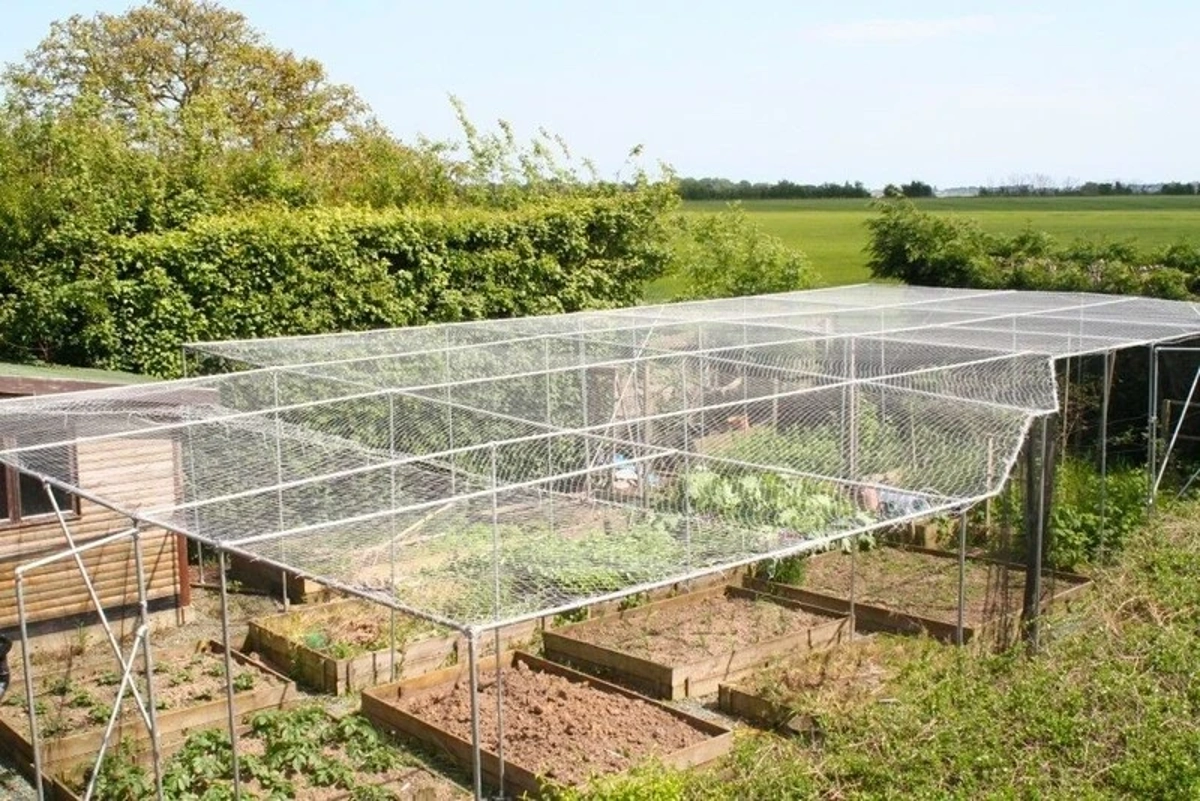Stay up to date with products and offers

Released On 22nd Jun 2023
Build Your Own Fruit & Vegetable Cages
Fruit and vegetable cages are available in many sizes, and styles, built from a range of materials such as wood, aluminium and steel.
What they’re for -
- Permanent structure that enables the gardener to walk inside, and move around freely to tend the plants
- Protect fruit and vegetable crops from birds, deer or rabbits
- Help to create a microclimate that helps your crops flourish
- Netting over a steel or aluminium frame provides the protection
Buying ready-manufactured fruit cage kits can be very expensive, so we’re going to talk about how you can build your own, and save money, using galvanised or powder-coated steel pipe and Interclamp fittings.
Choosing the best cage frame material might depend on:
- The look you want to achieve
- How long you want it to last
- Your budget
What materials can I choose from, and what are the benefits?
Wood - offers an attractive rustic look, and it may last several years if well maintained, but maintenance is time-consuming.
Metal - less attractive, but lasts longer than wood, and low maintenance. Good quality galvanised steel is a heavy-duty option that will last for many years. In exposed sites with less shelter from high winds, a steel fruit cage frame will be far more resistant to the elements. The initial outlay is more expensive, but over the long-term the investment is worth it.
- Steel fruit cages with powder coated finishes are far less prone to rust and will need little or no maintenance. They’re strong and durable.
- Aluminium is a popular option - it’s lighter, so it’s easier to move around than a galvanised steel frame, but that also puts it somewhat at the mercy of the elements in exposed sites. Aluminium is also fairly durable, as it doesn’t rust, but it’s more easily damaged than steel, which may shorten the average life expectancy.
DIY benefits - plenty of retailer options, but the DIY route using galvanised or powder-coated steel is usually much cheaper than manufactured kits, so you’ll get a much stronger, durable fruit cage than you could afford from a retailer if you’re on a budget.
How to build a durable, walk-in fruit cage from steel pipe and Interclamp fittings
Plan your design
Plan the dimensions carefully, including the roof height. Sketching it to scale is very useful, not only to plan the length of tube required, but to plan the number and type of tube clamps needed in different places.
Allow enough tube length for knocking the vertical support tube at least 50cm into the ground to create strength and stability. A good tip is to wrap coloured tape at a carefully measured point around the tube to help you knock it into the ground to the right level. A spirit-level is going to be an essential tool on this project!
Choose the right parts
Galvanised steel tube is available in different lengths and in sizes A27, B34, C42, D48 and E60 to suit clamp ranges. For bespoke orders, Fixings & Fittings also provide a cut-to-length service and can assist you further if you’re not sure what pieces you require to complete your project successfully.
For a fruit cage, you will probably get the rigidity and strength you need from our A27 size, which is approximately three-quarters of an inch, or 26.9mm in diameter. Keep this in mind when you order Interclamp tube clamps, as these are made in specific sizes to fit different sizes of tube.
Each tube length slots neatly into the appropriate Interclamp fitting to hold the fruit cage frame rigid and stable. There are lots of tube clamp types available for different joints in the frame, for example, clamps for joining uprights to top rails, middle-rail joints or three-way corner clamps that allow for two 90° horizontal pipes in a corner with a vertical upright pipe.
Add netting
Use cable ties to fix the netting to the frame. If you create a trench around the fruit cage perimeter, you can secure the netting to the frame below ground level, then fill in the trench - this will help to protect your plants from marauding animals that might dig under the fruit cage.
Extending your fruit cage
If you want to expand the fruit cage in future, a self-built structure makes it really easy - just change the clamps that are used and add more steel tubing. There are even clamps that can be retro-fitted, e.g. the 117Y Retro-Fit clamp, so you won’t have to disassemble the existing structure in order to extend it.
Take a look at one of our customer’s, Peter Guile, project. Peter used 72 pieces of 3m long A27 galvanised tube and various A27 Interclamp fittings to make his design come to life:


Here’s what Peter has to say about his project and experience using Fixings & Fittings:
“Connectors and pipe from Fixings and Fittings gave me the perfect, lowest cost, easy solution for my new fruit and vegetable cage. I used standard length pipes, as I have a power saw. Only an Allen key is required to assemble the frame, and my netting was easily fixed with plastic wiring ties. With 5cm netting on the roof to avoid snow problems and standard railing bases, my cage simply rests on the soil. What made the whole project even easier was the service from Fixings and Fittings which is as fast, friendly and helpful as you will find anywhere.”
For assistance in completing your garden project, contact us today and tell us about your design on 01460 261213 or email us a few details to [email protected].


